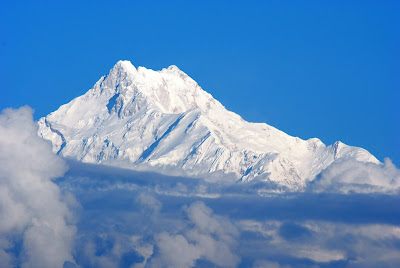This blog may help people explore some of the 'hidden' issues involved in certain media treatments of environmental and scientific issues. Using personal digital images, it's also intended to emphasise seasonal (and other) changes in natural history of the Swansea (South Wales) area. The material should help participants in field-based modules and people generally interested in the natural world. The views are wholly those of the author.
Wednesday, 4 November 2020
A Dusty Answer
About 700 million people in South Asia are dependent on the waters that come from the snows of the Himalayas. Yun Quin and colleagues at the Pacific North-West Laboratory have undertaken a study to determine why the snows in these mountains are currently melting more readily (https://www.theguardian.com/science/2020/nov/03/terrawatch-dust-is-speeding-up-melting-of-himalayan-snow). There is a tendency to presume that any increased rate of melting of the Himalayan snows is a simple consequence of global warming. These scientists showed, however, that dust blown from Africa and Asia into the region, darkened the snow. This darkening increased the rate of solar gain (less sunlight was reflected), causing the snow and ice to melt more quickly. The effect was most marked at altitudes around 4500m. The study essentially confirms that the effects of climate change on particular locations can be quite complex and can be evident over considerable distances. The ultimate effects on human populations, well to the South of the mountains, could be very problematic.
Subscribe to:
Post Comments (Atom)
-
I n the UK and US, a pparently popular and successful vegan/vegetarian restaurants are reportedly closing or adding meat to their menus ( ...
-
Early ripening fruit may seem convenient but some folk think it confirms environmental stress. There's also a possibility th...


%20mating%20NWCW.jpg)


No comments:
Post a Comment